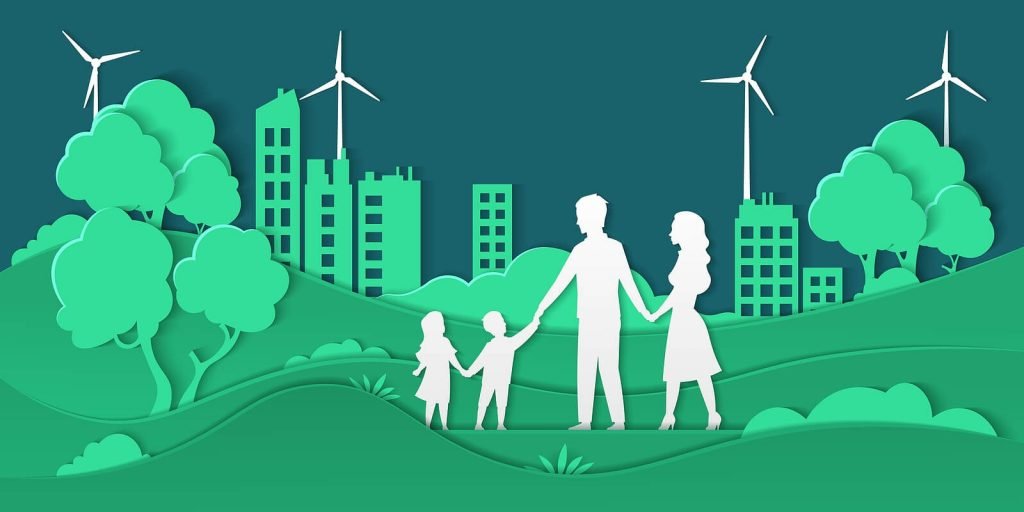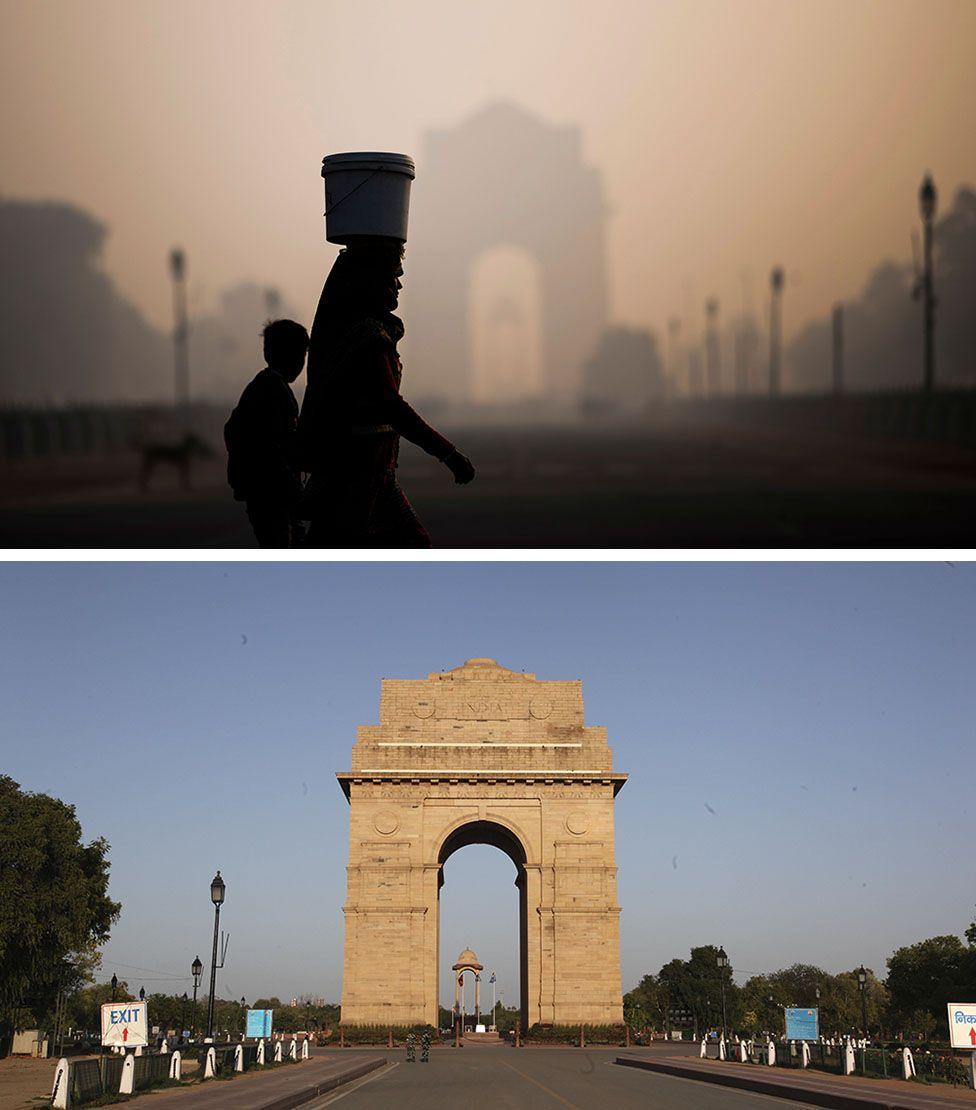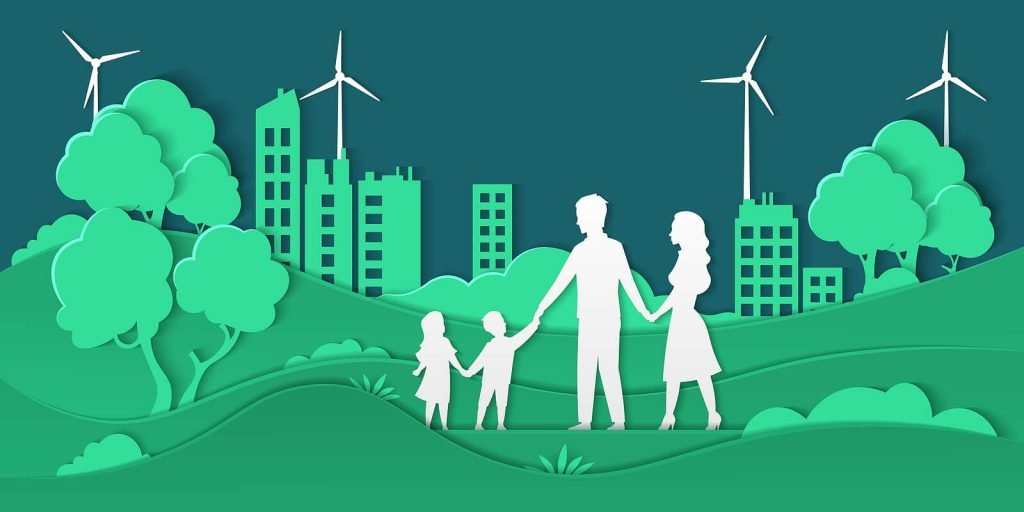Are there clear advantages to other urban areas when it comes smart cities and the environment? What are these advantages? This article will explore the relationship between smart cities and the environment.
Everyone is moving into cities and urban areas. This trend started with the Industrial Revolution and will continue in the near future. People earn their living in cities and urban areas. Urban areas are the most active commercial zones. Cities are not only centers for employment and income, but also for culture, art, and entertainment. By 2050, the United Nations predicts most people will be living in urban areas.
High population density is associated with a number of risks, including:

- Environmental pollution
- Pandemics
- Traffic congestion
- Infrastructure that is inadequate
- Crime levels are high
- High energy consumption
- Social services and amenities are overstretched
Urbanization is a major contributor to climate change. Today, most cities around the world are struggling with poor air quality. Most densely populated urban areas have a major problem with garbage collection and disposal. Pollution of the environment can cause health problems. Fine atmospheric particulate matters can cause respiratory disease, cancer, birth defect, cardiovascular disease and premature death in highly polluted urban areas. The term ambient fine particulate matters refers to PM2.5 particles that are smaller than 2.5 micrometers and smaller than 30ths of a hair in diameter. The precursor chemicals and particles that cause their formation in the air are released by vehicles, coal-burning plants, industries and waste burning. Both exposure to smaller and larger airborne particle is harmful. Studies have shown that exposure to high PM2.5 average concentrations over many years is the best predictor of death from disease. All of these negative health outcomes put a strain on medical services. The fine particulate matter can also have a negative impact on the climate and precipitation, which has a detrimental effect on health and wellbeing. The biodiversity of plants and animals is also negatively affected. Here are some examples of cities paying a high environmental price due to urbanization.
- Delhi, India Delhi is the capital city of India. The total population of the city is more than 26 million. Delhi’s air quality is hazardous, and it has a high pollution level throughout the year. In 2019, Delhi had a reading of PM2.5 of 98.6ug/m3. Delhi is plagued by a high rate of population growth, chronic traffic congestion and urban diseases. The main culprit is vehicle emissions. Old buses, trucks and lorries are in large numbers. The estimated total vehicle population is over 11,000,000. The city is home to a large number of factories and production plants. It is estimated that factories emit more than 1,000 tonnes of pollutants into the air every year. Experts advise wearing a mask when outside and avoiding outdoor exercises. Delhi’s situation is repeated across the entire country. According to State of Global Air India has the highest pollution levels in the world, with a population-weighted average PM2.5 of 83.2ug/m3 for 2019.
- Dhaka Dhaka is the capital city of Bangladesh and has over 21 million urban residents. The city’s air, with an average annual PM2.5 of 83.3mg/m3, is unhealthy throughout the year. The majority of pollutants are released by industrial plants, construction sites, and vehicles. Residents are advised to wear masks when exercising outdoors. Bangladesh’s rest is also heavily polluted. In 2019, the average annual population weighted PM2.5 was 63.4mg/m3.
- Chengdu: Chengdu has a population of more than 18 million, making it one of the largest urban areas in Western China. Many industries are located in Chengdu, and it suffers from the same pollution problems as many other rapidly developing Chinese cities. The main sources of pollution are vehicle emissions and industrial effluents. The Qin Mountains to the north shield the city from wind. The city also experiences high relative humidity all year. Both of these factors can contribute to the accumulation of particulate matter in the air.
What are the environmental benefits of smart city initiatives?
Smart cities and the environment have a direct relationship. The COVID-19 pandemic has taught us that the Earth is resilient. It was amazing to see how cities around the world experienced a fresher air and clearer skies after lockdowns caused people to park vehicles and turn off factories. Residents in some areas experienced clear skies after decades. The first picture below shows Delhi prior to the lockdown. The second shows improved air quality following the lockdown.
Smart city initiatives will help cities such as Delhi, Dhaka and Chengu achieve and maintain better air quality than they did during the lockdown. How will smart city technology achieve this? We offer some insights below.

Smart Cities Monitoring Air Quality
Air quality monitoring in smart cities helps improve air quality. There are several approaches and recommendations to this end:
- Clear view of data Smart cities are managed using the insights provided by technology. The first thing that a city must do is implement technologies that allow it to have a clear picture of its data. It is crucial to do this because, even in the most heavily polluted cities there are pockets of air that is cleaner than others. Air quality can vary greatly between two adjacent blocks. The right solutions can be found with data. Internet of Things is a huge help. Air quality sensors will be installed on Internet-enabled gadgets around the city to collect data. Mobile measurement with drones, cars, and bicycles are also options for collecting data. Few cities have data that is comprehensive on the air quality in their entire city. Data insights can help regulators and environmentalists make their case with data. Air pollution mapping in Oakland has given residents data that they can use to fight against industrialization. Data can also be used to raise awareness and encourage legislative action, such as limiting vehicle emissions or banning certain industrial activities.
- Use data to find solutions. With accurate data, cities can explore innovative ways to use the data to improve air quality. In Leeds, UK for example, geofencing and air quality sensors are used to switch hybrid cars to electric mode automatically when they enter areas with high pollution. When they leave the polluted area, normal hybrid operation is resumed. This will help the bad air to dissipate more quickly. The continuous monitoring of smart city environment will provide more insight on how to use data to solve smart city environmental problems.
Smart Traffic Management Solutions
A discussion on the smart city without considering vehicle emissions would be incomplete. In many cities, vehicle emission is the leading cause of poor air. To reduce vehicle emissions, it is best to eliminate internal combustion engines. Some countries have made bold moves in this direction
While legal solutions like these are a good idea, smart traffic solutions can help reduce air pollution. Here are some useful smart city technologies.
- Maps and rerouting : Gridlocks in traffic lead to higher emissions. Traffic should flow freely. Smart traffic cameras can map congestion and intelligent traffic lights will turn red or green as needed to reduce congestion.
- Smart Parking Apps One of the main causes of traffic jams is that drivers are erratic in their searching for parking spots. Smart parking apps would help reduce this type of behavior by alerting drivers to empty parking spots.
- Ridesharing Apps: Ridesharing applications reduce the number vehicles on the roads. These apps will encourage more people not to drive.
- Data Sharing with Motorists: Sharing data on traffic with drivers can help them avoid congestion and worsen an already bad situation. If drivers realize that their route is congested, they can organize alternate means of transportation, reschedule meeting or reconvene the meetings in less congested areas of the city.
- Bike lanes and bike-hiring services. The creation of bicycle lanes, and the facilitation of start-ups for bike-hiring services could lead to more people abandoning driving. This strategy will only be successful if it is accompanied by a public campaign promoting the benefits of cycling and improved security. For highly polluted urban areas, however, this strategy will have to be implemented after other measures have been taken to improve air quality.
Shore Connection Power Supply for Ships
In order to operate ship services, ships often burn fuel while in port. This is a major cause of pollution in coastal towns. To prevent this, it is possible to develop technology that will allow ships to connect to green energy once they arrive at the port. Siemens has developed a shore connection technology which is currently in use in Hamburg.
Remote Work and 5G Internet
5G Internet technology is essential for the deployment of smart cities. Many of the benefits that come with smart cities wouldn’t be possible without 5G. 5G Internet will be lightning fast, and Wi-Fi speeds will surpass current Ethernet speeds. The COVID-19 epidemic has made it easier to work from home. Most people will be able work from home soon with the global rollout of 5G. There will be less traffic and vehicle congestion as fewer people commute. As a result, the air and general environment will be cleaner.
Smog-Free Towers
A tower in Beijing can clean 30,000 cubic meters per hour of air using just 1,170 Watts of power. Rings and trinkets are made from the smog particles that have been extracted. We will soon have smart city pollution jewellery.
Smart City Project
Urbanization puts a huge strain on the energy system. Lighting is needed in residential and commercial areas, while industries must operate. Often, countries are forced to use dirty energy sources such as coal in order to meet the needs of their cities. Energy-saving smart cities are the only solution to this problem. They convert existing buildings into energy efficient buildings and look for other ways to conserve energy. Natural light is used in energy-efficient buildings to reduce the need for artificial lighting. They are built with materials that minimize heat loss in cold climates. Solar power can be used to operate air conditioning and heating systems. Solar energy is a great option for high-rise buildings. They can even sell the excess energy to the grid. Most cities can save a lot of energy by using solar street lights or efficient street lighting. Eight Spanish cities, for example, reduced their energy usage by two thirds when they used energy-efficient bulbs.
Final Thoughts on the Smart City and Environment
These are only a few of the solutions that have been implemented successfully in various cities. Smart cities have many environmental benefits. Scientists and urban planners have yet to come up with innovative solutions to ensure the environmental sustainability of smart cities.
